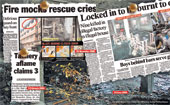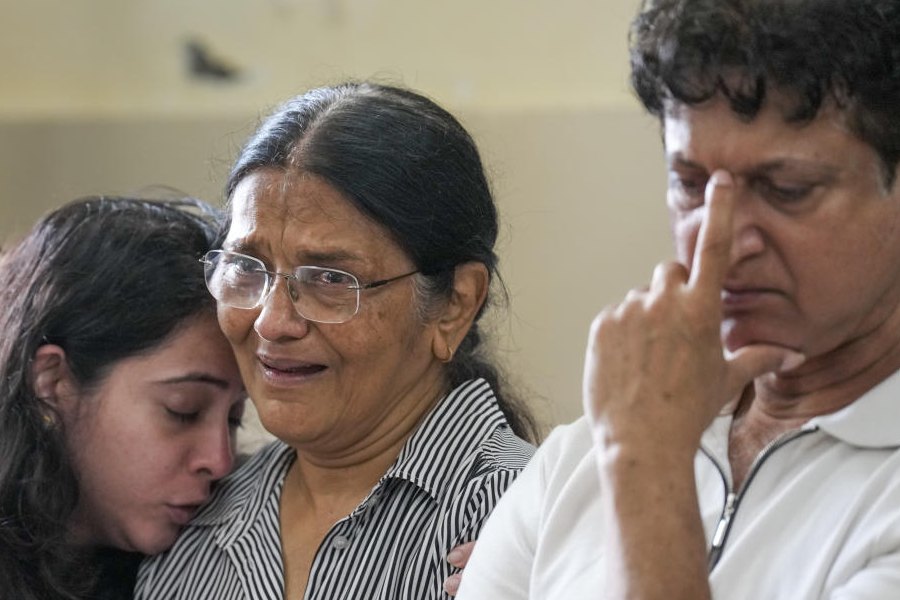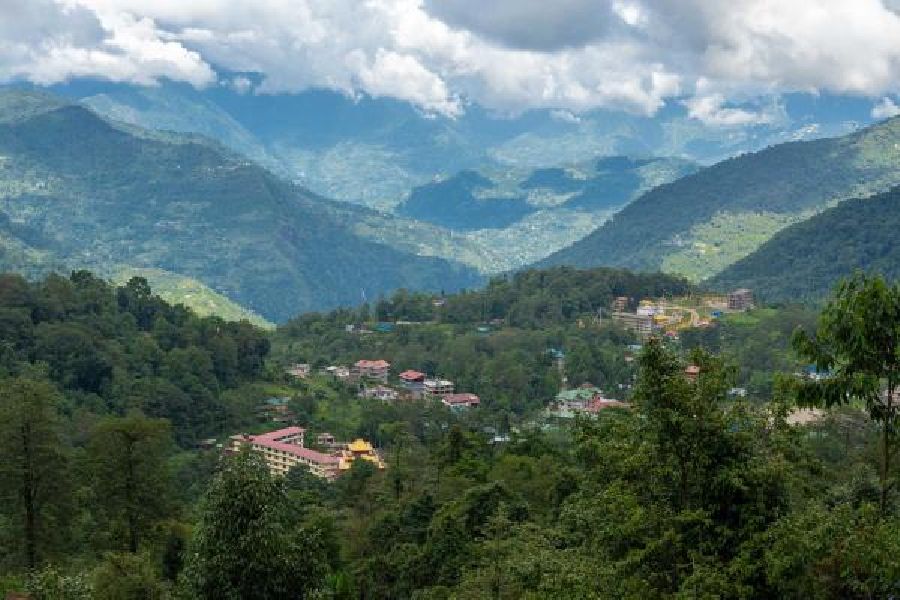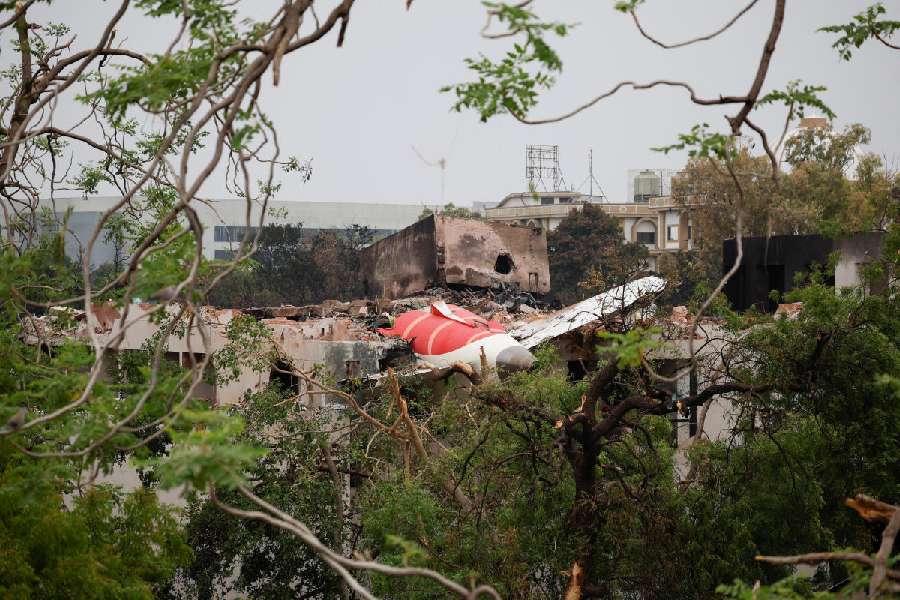 |
February 2004: A tannery in Tangra catches fire and becomes a gas chamber, in which two people die of suffocation and burns; six are injured.
November 2006: A blaze in an illegal sweatshop at 33C Topsia Road kills nine young workers who were locked in at night.
March 2008: A leather factory in Tangra is gutted. Five persons are hospitalised with serious burn injuries.
June 2008: Fire breaks out in an illegal leather-cutting unit in a Tiljala building; four persons injured.
•
Frequent fire outbreaks and loss of lives and property since 2004 have failed to stunt the growth of sweatshops in the dingy lanes of Tiljala, Topsia and Tangra. Business is, in fact, thriving and residents say someone opens a sweatshop in a soot-laced building in one of these localities almost every day.
“Nothing has changed here. It is a win-win situation for the landlord and the proprietor of the sweatshop. The landlord asks for and gets higher rent and the owner of the sweatshop does not have to make any fire-fighting arrangements. He can indulge in power theft, too. The losers are the workers and residents of such buildings, because they are the ones who will be at risk in the event of fire,” said Rahmat Ali, whose NGO Muhafiz helps educate children employed in the sweatshops.
According to a conservative estimate, there are nearly 10,000 sweatshops in Tiljala, Topsia and Tangra. The number does not include the leather and PVC factories and tanneries in these areas. Child workers churn out leather goods in most of these sweatshops.
At 33 Topsia Road, the site of the biggest sweatshop tragedy in Calcutta, nothing has changed since November 2006. Politicians who had visited the area and promised a slew of steps forgot their pledges as quickly as they made them. Fire safety licences and insurance for workers had been made mandatory after that incident, but none of the organisations — the Calcutta Municipal Corporation, fire services department and the police — ensured compliance.
“There were a few raids initially, but everyone forgot about the loss of lives later,” said a resident of a building that is a stone’s throw from the one where disaster struck.
The factory at 33C Topsia Road has been sealed, but residents say the owner now operates from another address in the same area.
“More and more sweatshops are being opened in residential buildings and more lives are being put at risk every day,” said Mohammad Karim, who stays on the first floor of 33C Topsia Road.
Local MLA Javed Ahmed Khan argued that his responsibility ended with “writing to the departments concerned” to initiate action. “Why only blame Topsia and Tiljala? Sweatshops are mushrooming in every part of the city, from BB Ganguly Street to Kasba. Moreover, it is the government’s responsibility to keep vigil. I have written to all the departments concerned, but they react only when there is an accident. They are just not bothered rest of the time.”
Civic estimates say there are around 2,000 illegal buildings in the area, but has never cracked the whip on builders who flout rules. With more buildings coming up, there has been a population boom, too.
Fire brigade officials admitted that Topsia, Tiljala and Tangra were the most disaster-prone areas of the city. “Every week, there are at least three to four fires in this belt. Most of them go unreported because there is no loss of life. But these incidents can get big any time and cause much damage. Nothing will change unless there is systematic vigilance and politicians, the police, the fire department and citizens cooperate,” said a fire department official.











